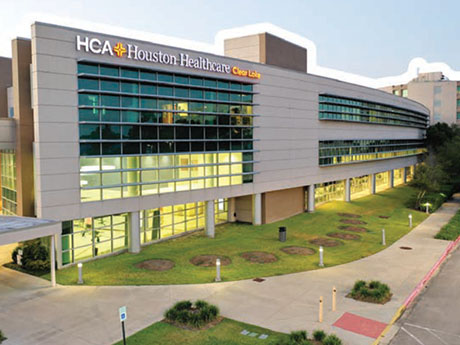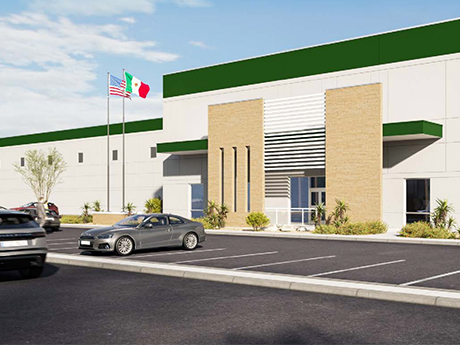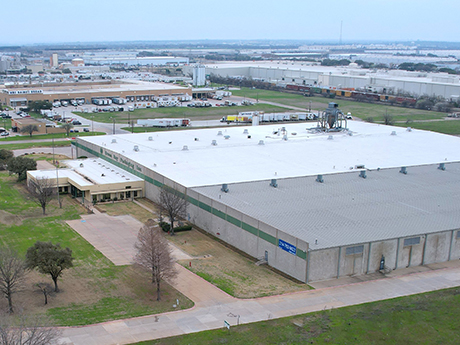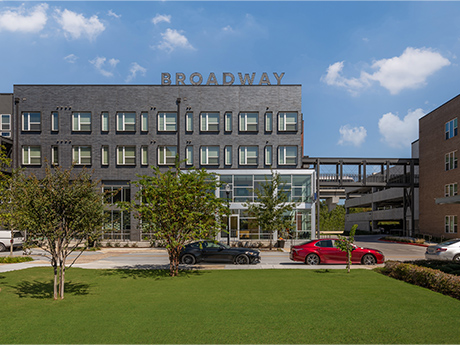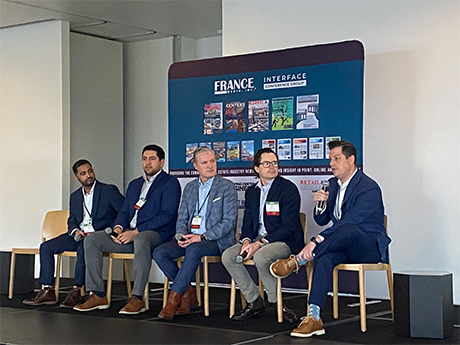By Taylor Williams The municipalities that comprise Houston’s southeastern suburban rings are on the rise, fueled not only by the larger population growth that has defined Texas in the 21st century, but also by expanded commerce and real estate development tied to the ports of Houston and Galveston. These municipalities vary tremendously from one to the next with regard to their size, both land- and population-wise. In addition, they possess varying degrees of maturity in terms of their microeconomies and real estate markets. Yet among the four cities in this region that Texas Real Estate Business spoke with for this story — Alvin, Webster, League City and Nassau Bay — some commonalities exist within their economic development endeavors. These include drawing on growth in the hospitality sector from the Port of Galveston’s thriving cruise business, as well as preparing for future real estate opportunities that will emerge from infrastructural projects, most notably the expansion of State Highway 99, known locally as Grand Parkway. As these cities work to expand their housing inventories, recruit new businesses and provide the ideal mixes of retail, restaurant and entertainment uses, they look to both traditional and new economic drivers. In doing so, they cultivate …
Texas Market Reports
By Nate Wilkins, associate at Munsch Hardt Kopf & Harr PC Office conversions represent one of the hottest real estate plays in the country, and Texas is undoubtedly a hotspot for those projects. According to D Magazine, in Dallas and Houston combined, there is more than 10 million square feet of vacant office space that is currently being transformed or is slated for conversion. A majority of these projects are mixed-use, meaning that office tenants will eventually be occupying the same building as residential tenants. Therefore, there are several key factors that office tenants and their landlords must consider when signing or renewing leases in the conversion projects, including utilization of common areas, use of utilities and parking allotments. What follows are some strategies for navigating office conversions as they become more prevalent in Texas over the next several years. Common Areas In a typical mixed-use property in which retail space is on the ground floor with multifamily above, landlords are prone to include lease language that states, “Tenant shall have no right to use the elevator lobbies, apartment floors and any other areas designated by landlord exclusively for residential occupants.” While standard, this language becomes troublesome when the only way …
By Taylor Williams Sometimes you just have to keep it real. In the world of mixed-use retail, featuring a blend of shops, restaurants and entertainment venues that is both unique in its totality and true to its surrounding market on individual levels is crucial to placemaking. As a concept, placemaking is somewhat difficult to define on paper but fairly easy to identify in the moment — the undeniable sense that the combination of what you are buying, eating, drinking and experiencing is simply not replicable anywhere else. Placemaking is, ironically, an idea that is very difficult to quantify, yet is intrinsically worth every dollar spent on design, construction and marketing — and then some. A longtime developer of mixed-use properties in Dallas once told this writer that the idea of bringing together a critical mass of residential, office and hospitality uses within one site — threaded and connected by retail, restaurants, green spaces and walkable infrastructure — is only novel to American consumers. Europeans have lived, worked and played that way for decades. And thanks to rolling swaths of land, surging population growth, rapidly evolving public infrastructure and the good-ole pro-business mindset, Texas has positioned itself as a leader in …
By Enrique Volkmer, associate at Lee & Associates Laredo, Texas, has emerged as one of the largest ports in the world by volume and crossings, driven by its robust infrastructure and strategic location. According to 2023 data from the U.S. Census Bureau, the Port of Laredo was responsible for handling an aggregate amount of product valued at about $320 billion, the most in the country by that metric. In addition, a 2024 article from Transport Topics, citing data from the Laredo Economic Development Corp., stated that the Port of Laredo sees more than 5.5 million truck crossings per year. The article also noted that the port is home to 660 trucking and transportation companies, 250 freight forwarders and 120 U.S. Customs brokers. Recent analysis of freight costs conducted by LoadWise 3PL and OL Logistics found that shipping product from Laredo to several major destinations, including Detroit, Atlanta, Indianapolis and Pittsburgh, actually yields savings compared to shipping from Houston to those cities, all other factors being held equal. The same study revealed a cost advantage when shipping westward from Laredo instead of Dallas to select markets such as Los Angeles, Denver, Seattle, Salt Lake City and San Francisco. Freight is often …
Despite fresh injections of geopolitical chaos and renewed fears of tariff-induced inflation, the new year has brought an elevated sense of positivity among Texas industrial investors and the brokers who represent them. Although the sector is hardly flying as high as it was three years ago, the strong underlying fundamentals of Texas markets represent a story that has yet to see an unhappy ending. In addition, there is an understanding that with all setbacks and disruptions comes new opportunities. Between that highly specific Texas real estate dynamic and that generic fortune cookie wisdom is the framework for industrial growth on both the supply and demand sides. “We are huge believers in the Texas growth story and have conviction that the existing tailwinds will continue to propel our markets here to the forefront of the industrial investment landscape,” says Will Cronin, vice president of acquisitions at Dallas-based investment firm CanTex Capital. “The capital flows continuing to come here bear that out.” Cronin’s perspective on industrial is both nuanced and appropriate. He says that since its inception, CanTex has primarily pursued off-market deals that were available not because of outstanding market fundamentals, but due to external factors like estate planning, changing tenant …
By Jonathan Brown of JHP Architecture/Urban Design The essence of a thriving city lies in its diversity. Dynamic urban landscapes can achieve this effect by offering a robust mix of uses that cater to a wide range of people, keeping their streets and buildings lively and vibrant throughout the day and into the night. City administrators, architects and master planners have long sought the alchemical mixture for this success. However, zoning codes for various municipalities can often read like complex recipes: A cup of residential here, a few ounces of retail there, a pinch of municipal infrastructure all around, a dash of hidden parking and a sprinkling of community open space to really tie the flavors together! Successful placemaking is not simply the sum composition of all its parts; it requires thoughtful integration and balance. With today’s housing shortages, multifamily developments make sense, but integrating retail uses within those projects is challenging. This is despite the fact that many comprehensive plans and zoning codes mandate specific retail quotas, which may not be easily supported by the economics. Creating vibrant, engaging spaces requires more than just ticking boxes in the zoning code. Stakeholders want to avoid ending up with a …
The “flight to quality” trend has been ensconced in the embattled office sector for much of the post-pandemic era, and it’s showing little sign of slowing in the major markets of Texas. With overall tenant demand depressed in the aftermath of COVID-19, opportunities existed in droves for office users to upgrade their spaces and move into buildings with desirable amenities and vibrant surrounding neighborhoods. In doing so, these companies sought to incentivize their employees to come back to the office. Simultaneously, owners that invested in wellness features and activation programs for their properties sought to gain a leg up on the competition — and make tough conversations with lenders a bit more palatable. Whether or not those initiatives worked as intended undoubtedly varies greatly from company to company and owner to owner. But after multiple years of stagnant occupancy and rent growth, the targeting of seemingly superior buildings and locations has come to represent more than just opportunistic decision-making by tenants. It’s a movement that has created visible delineation among winning and losing submarkets, a strategy that embodies basic financial prudence and perhaps a necessary evil — assuming that office usage is finally starting to rebound in a meaningful …
By Taylor Williams AUSTIN, TEXAS — On the surface, Austin has everything that expanding retail and restaurant operators could possibly want: youth, density, culture, high-paying jobs. Yet when these users begin scouting and diving into the state capital’s retail real estate market, they often find that entering or expanding there is much easier said than done. Skyrocketing home prices, increased vehicular congestion and limited infrastructure outside the urban core are just the most visible ways in which Austin has been somewhat victimized by its own torrid growth over the past 10 to 15 years. And each of those variables factors into retail site selection and contributes to the challenges of adding new retail and restaurant space to the market. Editor’s note: InterFace Conference Group, a division of France Media Inc., produces networking and educational conferences for commercial real estate executives. To sign up for email announcements about specific events, visit www.interfaceconferencegroup.com/subscribe. Simply put, if there are no rooftops, roads, parking spaces and utilities, there can be no new retail development. Such is the story in some of Austin’s more remote suburbs, though few doubt that those preliminary requirements for retail growth will eventually be delivered. But there is also the issue of raw …
By Taylor Williams SAN ANTONIO — Automotive parts manufacturers and data center operators both represent major sources of demand for industrial space in San Antonio, as well as major consumers of electrical resources. Both sets of users are increasingly prioritizing access to cheap, abundant electricity in their site selection and other real estate decisions. But that’s about where their similarities end. For the automotive industry has been a source of job growth and retention in the San Antonio area for decades, whereas data centers are a relatively new phenomenon that offer minimal contributions to local employment. And in between the two on the spectrum of industrial end users are third-party distribution and logistics companies, which really represent the market’s bread-and-butter tenant. But these groups typically don’t have such taxing power demands. Editor’s note: InterFace Conference Group, a division of France Media Inc., produces networking and educational conferences for commercial real estate executives. To sign up for email announcements about specific events, visit www.interfaceconferencegroup.com/subscribe. For data center developers and users, the need and demand for affordable, plentiful power is nothing new. And the fact that Texas has long had its own deregulated power grid has contributed mightily to the state landing many of those …
By Taylor Williams DALLAS — As is the case for many commercial asset classes and markets in 2025, there is an expectation of elevated deal volume for investment sales of affordable housing properties in Texas. But brokers in that space caution that the rebound will likely be marginal and is not necessarily indicative of ideal market conditions taking hold. A quintet of panelists broke down this notion and others at the InterFace Texas Affordable & Workforce Housing conference on Feb. 13 at the Westin Galleria Dallas hotel. Mary Ann Bennett, senior managing director at BBG Real Estate Services, moderated the discussion on investment sales activity. Editor’s note: InterFace Conference Group, a division of France Media Inc., produces networking and educational conferences for commercial real estate executives. To sign up for email announcements about specific events, visit www.interfaceconferencegroup.com/subscribe. Panelist Michael Furrow, senior vice president of affordable housing at commercial finance firm BWE, took the audience of 200-plus back in time to illustrate just how quiet the past two years had been. He did so by providing statistics on affordable housing sales for Dallas-Fort Worth (DFW) between 2021 — when multifamily rents and sales prices were peaking across the board — and 2024, when they …


